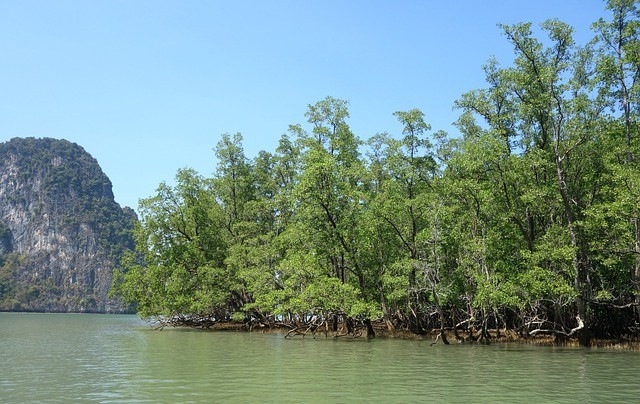
A study revealed a peculiar gravitational relationship that connects the lunar body and the mangrove canopies. Finding a strange moon wobble, which was not expected, impacted these mangroves, demonstrating the moon's power over life.
Lunar Cycle Affects Mangrove Growth
Researchers think that the lunar cycle affects mangrove canopy cover as well as animal movement and even coral spawning, reported Science Alert.
Mangrove ecosystems serve as natural carbon sinks, so understanding them better will be beneficial, according to The Guadian.
Macquarie University wetland ecologist Neil Saintilan and others used satellite images to see the difference across Australia via satellite pictures from 1987 to 2020.
Data showed a fluxing of how dense the mangrove canopy was. Tides ruled by lunar gravity touch coastal mangrove roots; these changes determine how these mangroves grow or wither.
Lunar Wobbles
Every 18.61 years, a lunar wobble occurs, pulling tides lower and pushing tides higher in two distinct cycles that last around 9.3 years.
When the wobble occurs, it impacts the growth and shrinkage of the mangrove canopy cover across the majority of the Australian continent.
Until now, Saintilan told ScienceAlert, we didn't have the length of annual records at an appropriate scale to see these patterns caused by the peculiar gravitational relationship via the lunar body as seen in the mangroves.
He added that they encountered a fascinating fluctuation on an estimated 18-year cycle while studying the pattern of annual tree canopy over time. The lunar wobble was mentioned after NASA scientists illustrated how its next stage might induce a spurt in rising seas in 2021.
He connected the dots, and the team realized what emerged to be a strong connection between lunar cycles and mangrove canopies.
If the wobble is on the wane, they say mangroves will not get enough water in their roots, resulting in less canopy cover. If the wobble is active, it will result in a higher tide and more mangrove cover.
A relationship between the lunar wobble and the mangrove canopy growth was in the background of climate change. They also concluded that the moon's gravity influences lunar cycles and daily tides, which impact heavy rains and droughts.
For example, when 40 million mangroves withered up and died in the Gulf of Carpentaria in northern Australia in 2015, scientists found that an intense El Nino corresponded with a lunar wobble minimum.
According to the researchers, this contributes to understanding why the Gulf lost more mangrove forests than some other regions. The researchers' findings were most pronounced in mudflats along coastlines and river channels, which are subject to the full range of tidal extremes, lending credence to the researchers' findings.
According to Saintilan and colleagues' findings from the 2015 dieback event, the grey mangrove Avicennia marina is highly susceptible to canopy decrease under lower inundation, per Science Advances.
Such research is essential for comprehending the Earth's natural rhythms. This one, in particular, may set the stage for future research into whether the mangroves' capacity to absorb carbon dioxide in their waterlogged soils adjusts with lunar phases in a similar way that mangrove canopy cover does.
Discovering how the gravitational relationship affected by the lunar body is seen in the mangrove canopy cover is the first step to more knowledge in this area.








